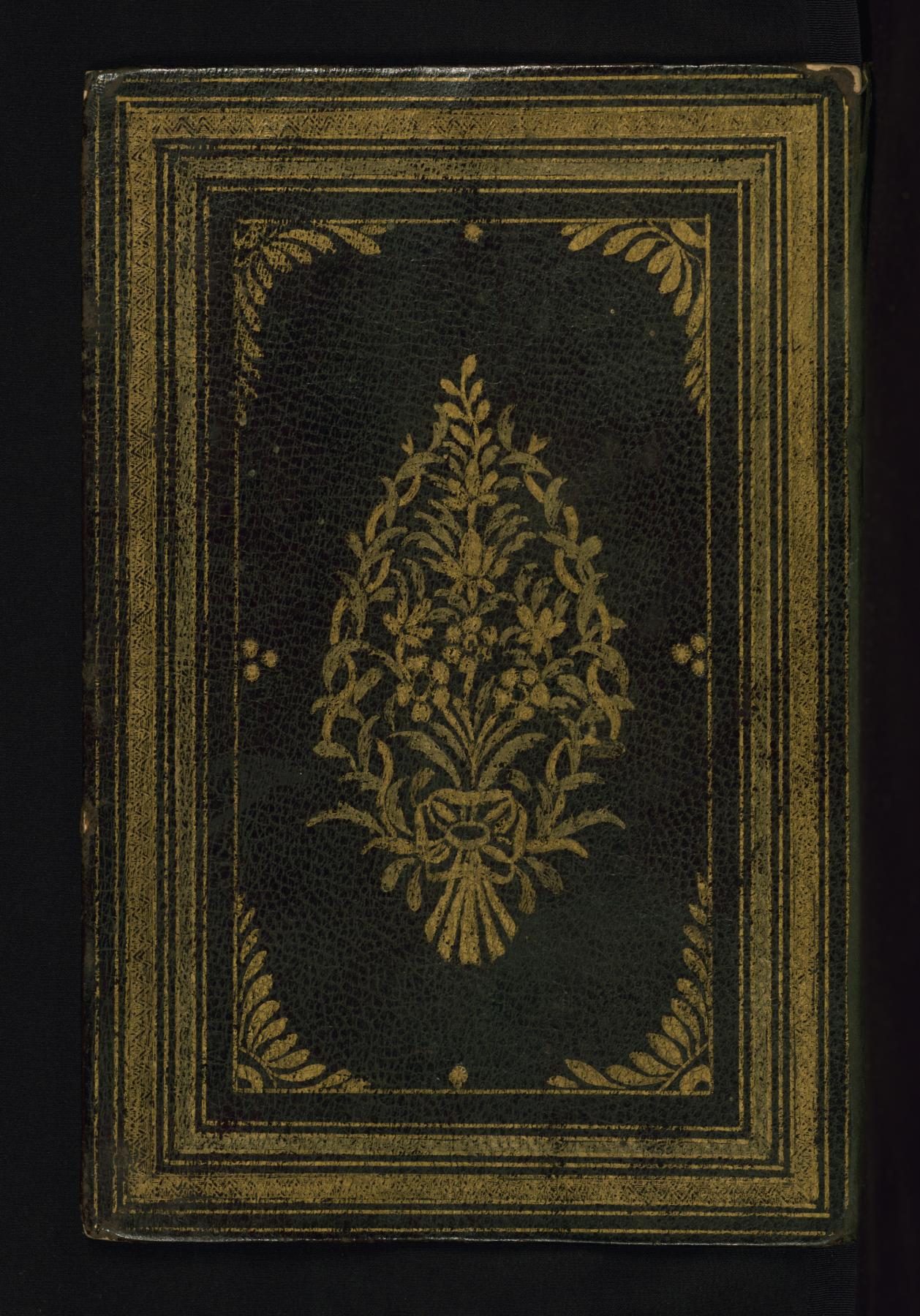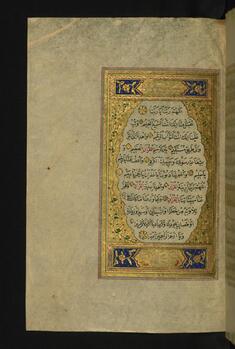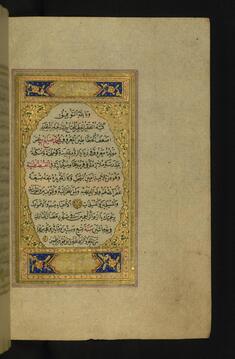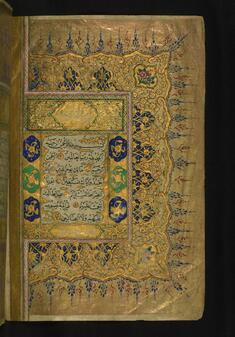Qur'an
(Islamic Manuscripts, Islamic World , Manuscripts and Rare Books)
This illuminated copy of the Qur'an, Walters manuscript W.743 was written in Naskh script in Istanbul (al-Qustantiniyah) in 1269 AH/AD 1853 by Muhammad Salih ibn 'Umar, a pupil of Amin al-Bahjat (Behcet). According to the colophon (fol. 257b), the manuscript was finished in Ramadan 1269 AH/AD 1853. The scribe states that he was born in Kumuljunah (Gümülcine, Komotini in northeastern Greece) and resided in the Madrasat Mulazimlar, in the vicinity of Hammam Sulaymaniyah in al-Qustantiniyah. The manuscript opens with a double-page illuminated frontispiece of Surat al-fatihah and the beginning of Surat al-baqarah. There are two finispieces: a colophon (misbound at fol. 257b) and a final prayer (fol. 305a). Other illuminated elements include chapter headings and verse markers in the form of illuminated disks and rosettes.
Provenance
Provenance (from the French provenir, 'to come from/forth') is the chronology of the ownership, custody, or location of a historical object. Learn more about provenance at the Walters.
Robert L. Fox [date and mode of acquisition unknown]; Walters Art Museum, 1990, by gift.
Conservation
| Date | Description | Narrative |
|---|---|---|
| 4/11/2017 | Treatment | binding stabilized; examined for exhibition; media consolidation; tears repaired |
Geographies
Turkey, Istanbul (Constantinople) (Place of Origin)
Measurements
Folio H: 6 5/16 x W: 4 5/16 in. (16 x 11 cm)
Credit Line
Gift of Robert L. Fox, 1990
Location in Museum
Not on view
Accession Number
In libraries, galleries, museums, and archives, an accession number is a unique identifier assigned to each object in the collection.
In libraries, galleries, museums, and archives, an accession number is a unique identifier assigned to each object in the collection.
W.743







